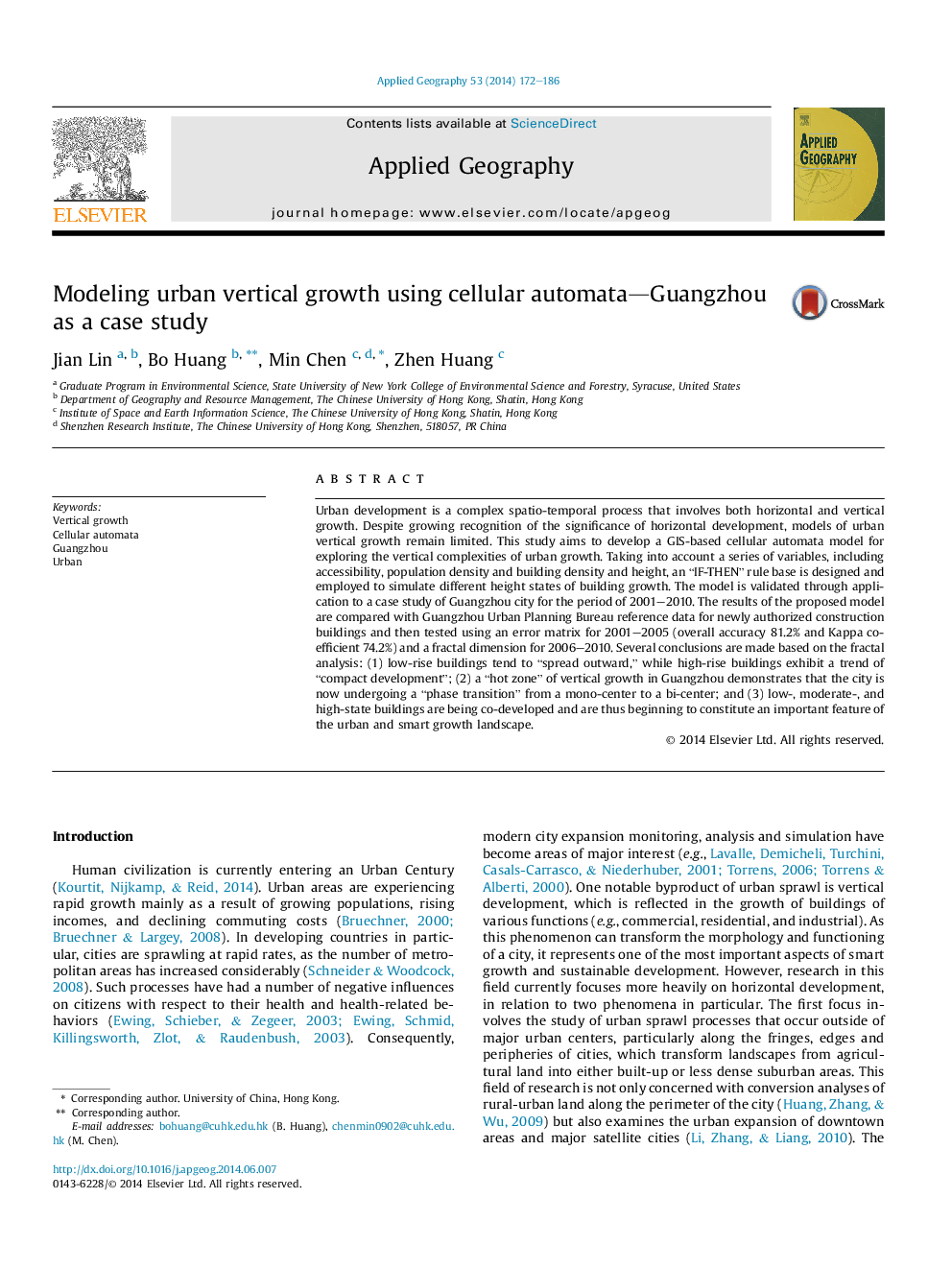| کد مقاله | کد نشریه | سال انتشار | مقاله انگلیسی | نسخه تمام متن |
|---|---|---|---|---|
| 6538711 | 158708 | 2014 | 15 صفحه PDF | دانلود رایگان |
عنوان انگلیسی مقاله ISI
Modeling urban vertical growth using cellular automata-Guangzhou as a case study
ترجمه فارسی عنوان
مدل سازی رشد عمودی شهری با استفاده از دستگاه اتوماتیک سلولی-گوانگژو به عنوان یک مطالعه موردی
دانلود مقاله + سفارش ترجمه
دانلود مقاله ISI انگلیسی
رایگان برای ایرانیان
کلمات کلیدی
رشد عمودی، اتوماتای سلولی، گوانگژو، شهری،
موضوعات مرتبط
علوم زیستی و بیوفناوری
علوم کشاورزی و بیولوژیک
جنگلداری
چکیده انگلیسی
Urban development is a complex spatio-temporal process that involves both horizontal and vertical growth. Despite growing recognition of the significance of horizontal development, models of urban vertical growth remain limited. This study aims to develop a GIS-based cellular automata model for exploring the vertical complexities of urban growth. Taking into account a series of variables, including accessibility, population density and building density and height, an “IF-THEN” rule base is designed and employed to simulate different height states of building growth. The model is validated through application to a case study of Guangzhou city for the period of 2001-2010. The results of the proposed model are compared with Guangzhou Urban Planning Bureau reference data for newly authorized construction buildings and then tested using an error matrix for 2001-2005 (overall accuracy 81.2% and Kappa coefficient 74.2%) and a fractal dimension for 2006-2010. Several conclusions are made based on the fractal analysis: (1) low-rise buildings tend to “spread outward,” while high-rise buildings exhibit a trend of “compact development”; (2) a “hot zone” of vertical growth in Guangzhou demonstrates that the city is now undergoing a “phase transition” from a mono-center to a bi-center; and (3) low-, moderate-, and high-state buildings are being co-developed and are thus beginning to constitute an important feature of the urban and smart growth landscape.
ناشر
Database: Elsevier - ScienceDirect (ساینس دایرکت)
Journal: Applied Geography - Volume 53, September 2014, Pages 172-186
Journal: Applied Geography - Volume 53, September 2014, Pages 172-186
نویسندگان
Jian Lin, Bo Huang, Min Chen, Zhen Huang,
